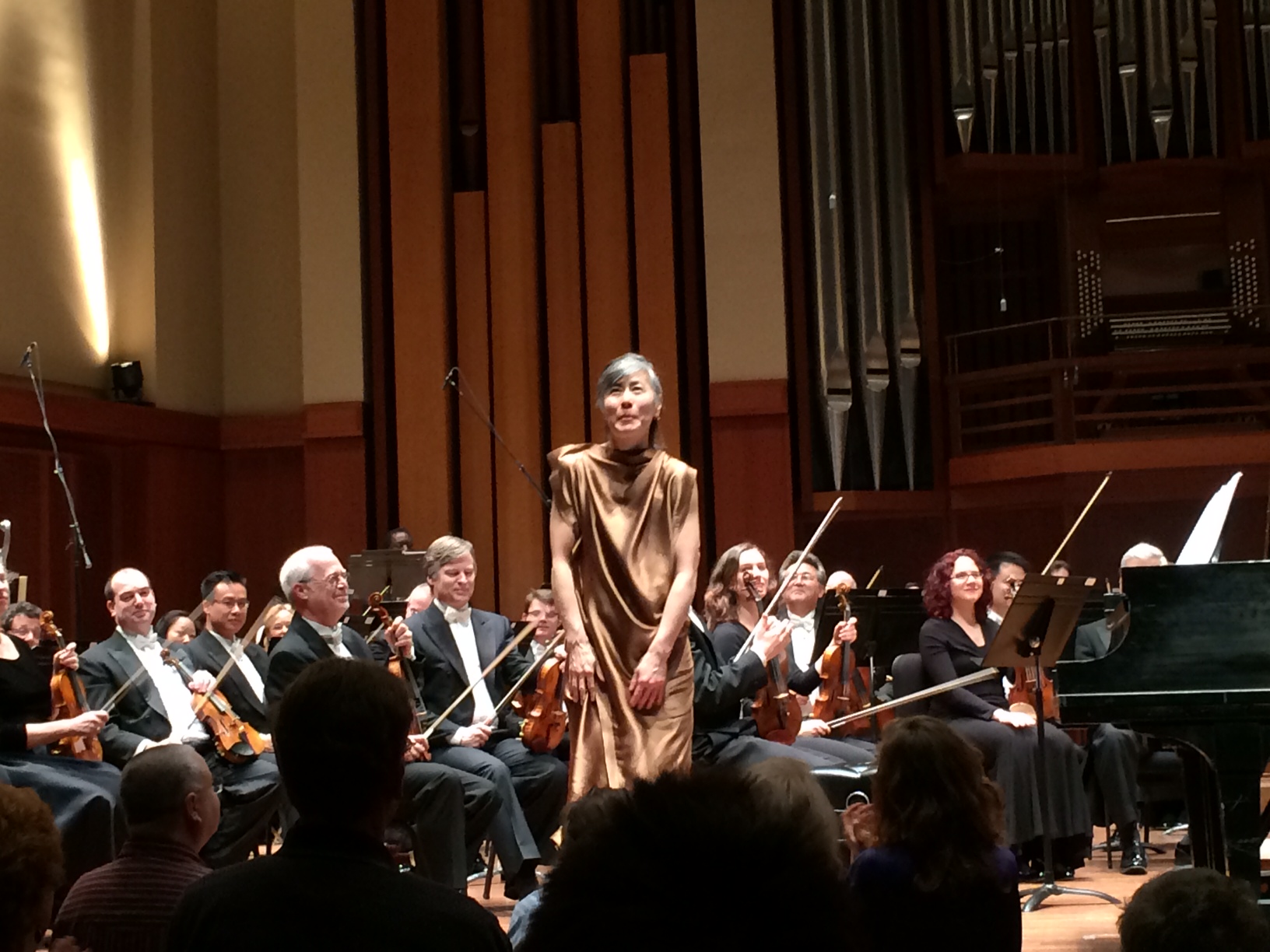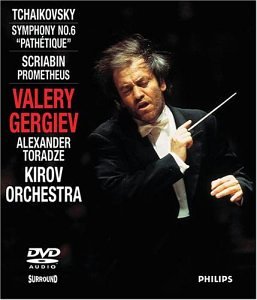Pathetique and Piano Concerto Premiere
March 23 2014We saw the Seattle Symphony in action last night with Tchaikovsky’s Symphony No. 6, “Pathetique”, and the US premiere of Alexander Raskatov’s Piano Concert, “Night Butterflies”.
The program started with Rimsky-Korsakov’s Snow Maiden Suite. I actually didn’t recognize this piece, which is surprising given how much of Rimsky-Korsakov’s works are instantly recognizable. It was performed pretty well, nothing outstanding or interesting.
Next was the Raskatov. The pianist was Tomoko Mukaiyama, whose bio states that she is a “pianist, performer and visual artist”. In the piece, we saw a little of all three roles. She wore one of the most interesting dresses I’ve ever seen by a classical performer, a loose-fitting golden dress with some boot-like wraps around her calves.
The piece is based on an experience the young Raskatov had with visiting a green house garden and experiencing the butterflies there. It is decidedly a modern piece, with many short movements (I think it was 12 movements). At times, we got a huge wave of sound, definitely not melodic and usually not in any type of pattern. I’ll admit to being a little embarrassed - after one movement the bass section started re-tuning. They must’ve needed to tune down for the next movement; however, for a short while I thought that it was all part of the piece and they were just playing a round amongst themselves!
There are a number of interesting things the performer did that I’ve never seen from other pianists. There were a few sections with very loud and accented chords from the piano. Mukaiyama played those so forcefully that the piano would move forward a little bit on each chord. I’ve never seen a piano move like that. Near the end of the piece, Mukaiyama started singing the melody while playing. Her voice wasn’t operatic or anything, but it was pleasant and went well with the music.
I’m proud of the audience - they stuck through a very modern piece over nearly 30 minutes and gave a standing ovation to the performer at the end. Unfortunately, Raskatov wasn’t able to make his scheduled appearance due to illness.

The second half was all Pathetique. This piece is one of my favorites and I was very fortunate to get to play it with the Northbrook Symphony Orchestra back in 2007 (I remember it was the same day the Bears beat the Saints to make the Super Bowl…the performance was not well-attended). There are numerous theories surrounding this symphony, but the simple fact is that Tchaikovsky died 9 days after the premiere performance. I think Tchaikovsky effectively wrote his own death (by suicide) into the piece.
The Pathetique is one of the most beautiful and pathos-filled pieces ever written. But amazingly, I find that most performances fall flat because the emotion doesn’t overwhelm, especially in the key passages. My favorite performance of this piece is Valery Gergiev conducting the Kirov Orchestra (unfortunately it’s not easy to purchase this on Amazon anymore). Gergiev is a master with Tchaikovsky, and he’s able to play with the tempos while maintaining forward momentum. He is most affective in the climax in the first movement. Here, the strings and the brass have a conflicting conversation. The strings push forward with the main theme, while the brass answer back by stretching out the tempo. The result is the manifestation of Tchaikovsky’s inner struggle, one that eventually leads to the brass winning (the re-appearance of the second melody by the strings is an epilogue).

Seattle’s first movement was really uneven. The first few pages were really messy and not played together. One of my biggest pet peeves is inconsistency in bow positioning. Alexander Velinzon tends to use a lot of bow, even during quiet passages (I really like this). The result is that he spends a lot of time in the lower half. There are a few violinists that are on the polar opposite and will use just a tiny bit of bow and stay in the upper half. These effects have consequences to the listener, as it leads to inconsistent start/stops and inconsistent feelings of tempo.
The second movement was pretty good. Tchaikovsky famously wrote this as a waltz in 5/4 meter (not really something you can dance to, unfortunately). I thought it was really interesting how Morlot varied the tempos. The beginning waltz is brisk and forward-moving. He conducted this passage by dividing the measure in two and conducting as 12-345. The second melody with the drumbeat is a little slower, and he conducted that passage truly in 5.
The third movement again was a little messy. There are a lot of notes in this one, and the playing just wasn’t as crisp as it needed to be. I sometimes wonder how much practice time is put into a piece like this, especially when they also have to play a difficult, modern, US premiere piece in the same concert. I would guess that these musicians play Pathetique every other year, so there is a bias toward old (and bad) habits.
The audience (at least half) did applaud after the third movement. It’s so tough here for the audience. It really sounds like it should be the end of the piece, as a heroic military march ends in a large crescendo. However, there is an entire movement left to go! When I saw Charles Dutoit conducting the Chicago Symphony Orchestra, he ended the third movement and in one motion started the fourth movement. The audience never even had a chance to applaud.
The last movement was actually the strongest for the Seattle Symphony. Their sound was quite beautiful as they played the big crescendo that is done in unison among all the strings. This was the ending that Tchaikovsky deserved, his death note that was later carried out just days after finishing the symphony.
comments powered by Disqus